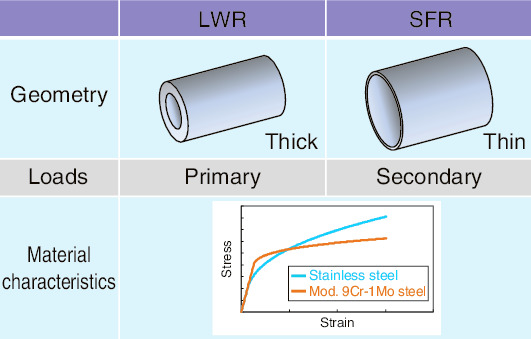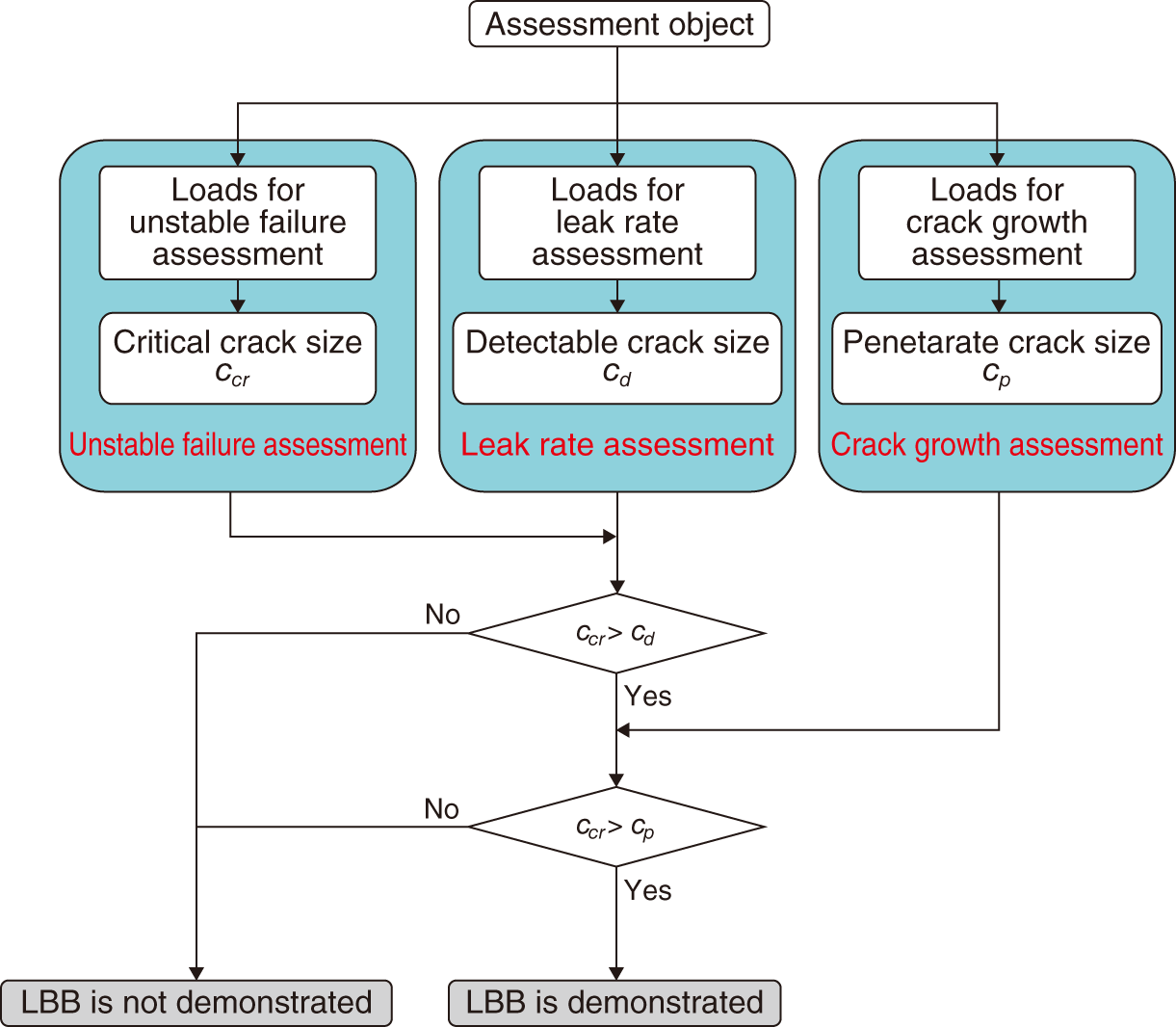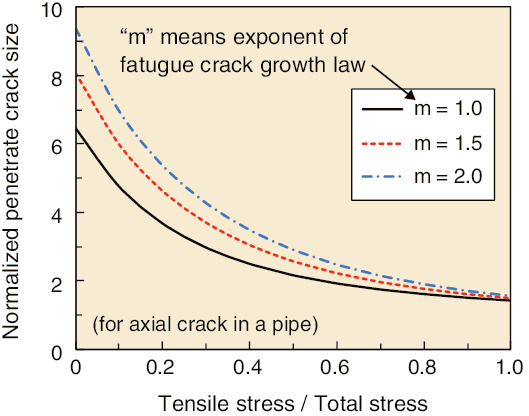
Fig.7-4 SFR-pipe features

Fig.7-5 Provisional LBB-assessment flowchart

Fig.7-6 Penetrating-crack-size diagram
The pipe geometry of a sodium-cooled fast reactor (SFR) has thin walls and a large diameter compared to that of a light-water reactor (LWR). The pipe material, modified 9Cr-1Mo steel, has a relatively high yield strength and low ductility compared to conventional austenitic stainless steels, as shown in Fig.7-4. In addition, the secondary stress caused by thermal expansion is predominant in SFR. Accounting for these features, a rational leak-before-break (LBB)-assessment guideline is proposed and will be published to provide a technical basis for substitution of volumetric tests by continuous leak-monitoring during in-service inspections.
LBB is based on the concept that it is possible to deal properly and safely with cracks by detecting leakage of internal fluid from a penetrating defect before catastrophic failure occurs.
First, an LBB-assessment flowchart for the SFR components was proposed, as shown in Fig.7-5. Secondly, taking the SFR-pipe features into account, evaluation methods for calculating the critical-crack size, the detectable-crack size, and the penetrating-crack size were developed and incorporated into LBB assessment. Confirming that the penetrating-crack size depends almost exclusively upon material characteristics and loading conditions, evaluation diagrams were prepared for users’ convenience, as shown in Fig.7-6. Furthermore, adequate-safety margins were recommended for reasonable and conservative evaluations. As a non-mandatory appendix, some material characteristics that can be used in evaluations are also illustrated for easy use of the methods.
To publish the developed LBB-assessment procedure as a guideline officially authorized by the Japan Society of Mechanical Engineers (JSME), JAEA will make a technical contribution.
<Previous: 7 Research and Development of Fast Reactors | Next: 7-2>